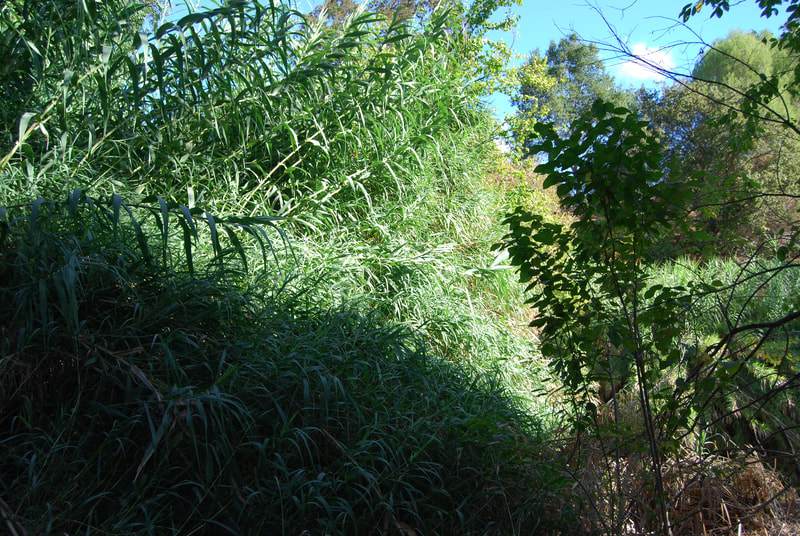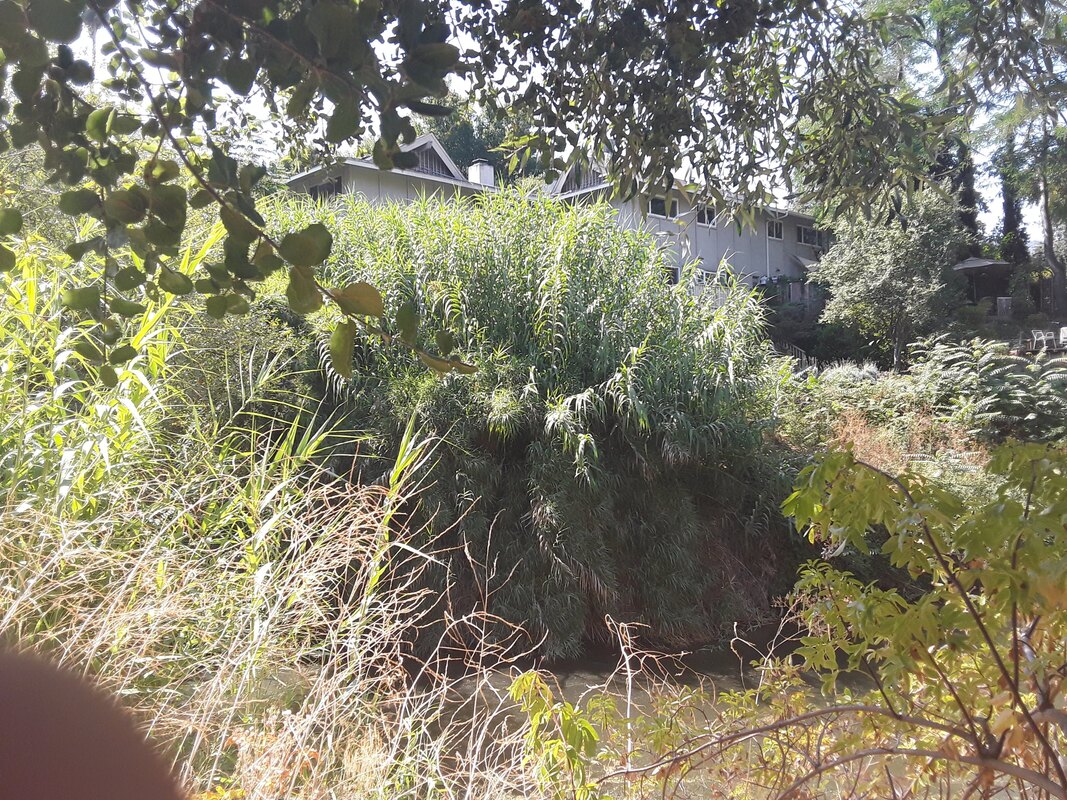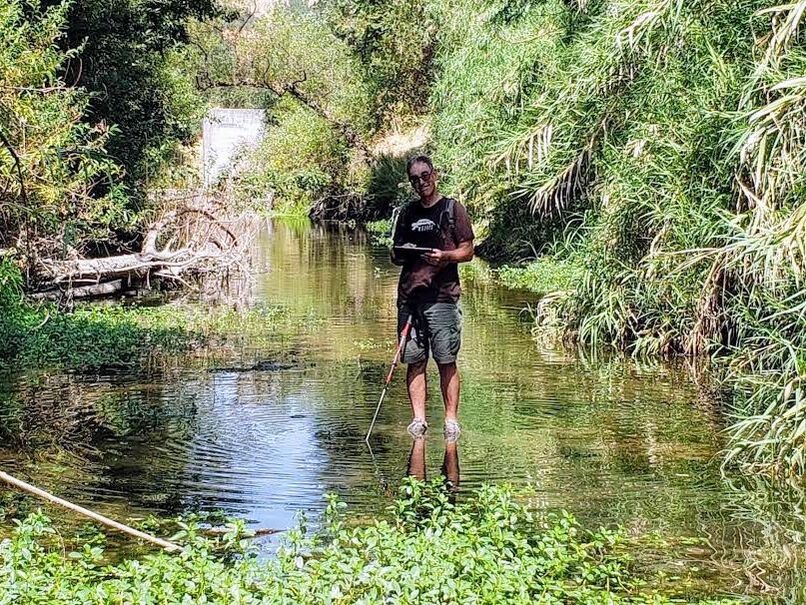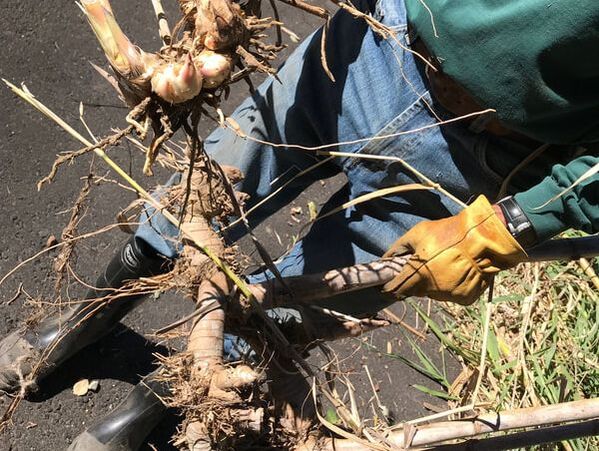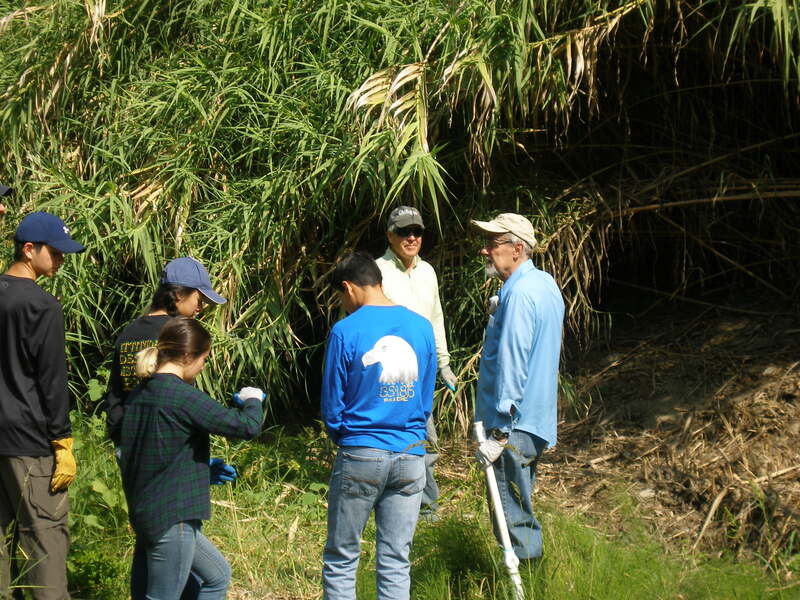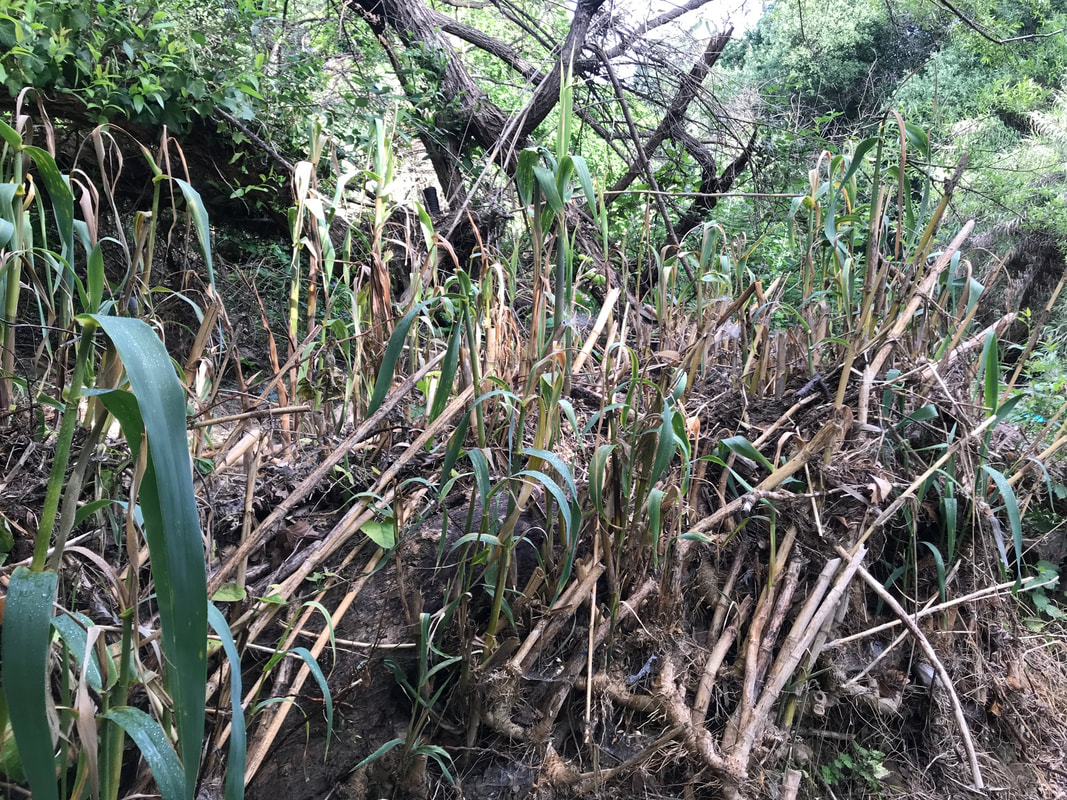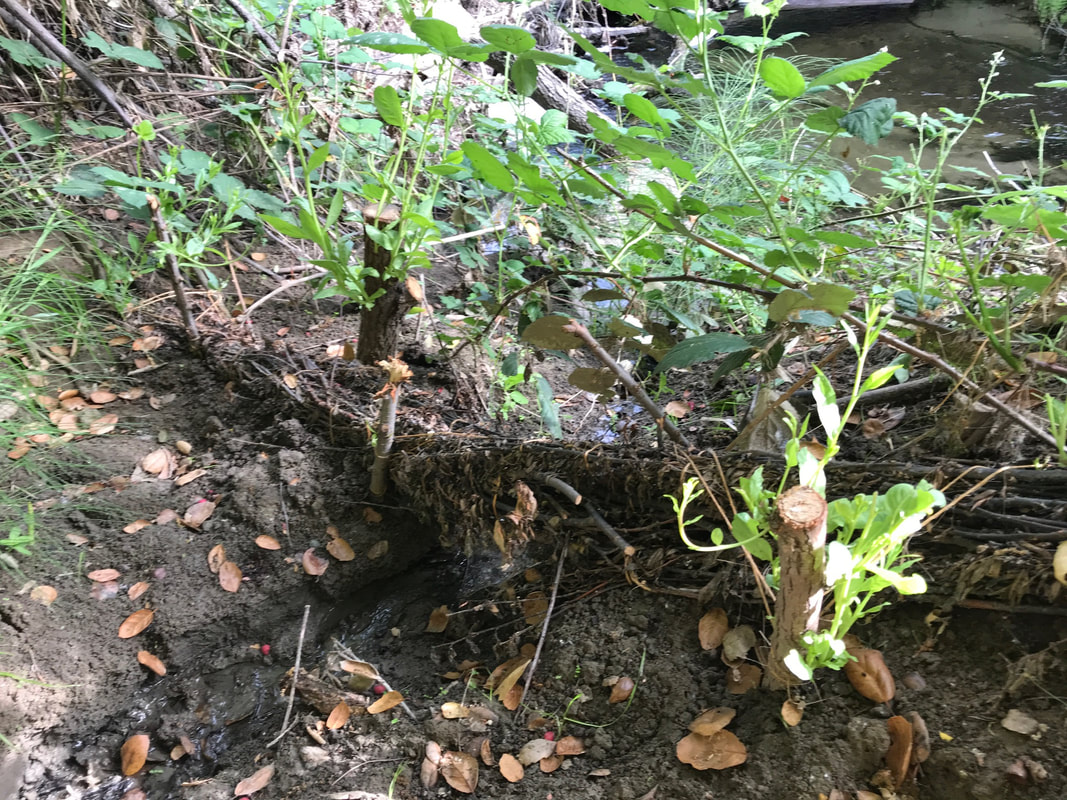Arundo Removal and Replacement
The Walnut Creek Watershed Council has recognized Arundo as one of the main threats to the health of our watershed. Eradicating this plant from the watershed will be a multi-year effort that involves locating and removing stands of Arundo on public and private property, and where feasible, replacing the Arundo with a suitable native plants.
For a more detailed look at the Council's Arundo removal activities, see our Arundo Removal and Replacement Reports here.
For a more detailed look at the Council's Arundo removal activities, see our Arundo Removal and Replacement Reports here.
Arundo donax: "Creek Invader"
|
Arundo donax (also called giant reed or giant cane) is an invasive non-native plant that grows along creeks. It can grow four inches a day and up to a total height of thirty feet! Arundo consumes prodigious amounts of water and spreads aggressively—these qualities make it easy for Arundo to outcompete native plants for resources and space. The plant provides little food or habitat for insects, birds, and other wildlife. Arundo’s encroachment on waterways can lead to flooding, and the plant poses a fire hazard.
|
ARUNDO IS BIG
|
ARUNDO TAKES OVER
|
ARUNDO REGROWS
|
Arundo Is in Over 250 Locations in Our Watershed
|
Arundo has spread all over the Walnut Creek Watershed. Using a combination of aerial imagery and creek walking, the team has found over 250 patches of Arundo in our watershed. This interactive map shows the locations of patches we have identified and updates in real time as we find and record more patches. We believe there are many more patches in areas that we have not yet been able to inspect.
|
|
Arundo is taking over our creeks. We're changing that. |
ARUNDO CAN BE REMOVED AND REPLACED
|
Despite the serious threat Arundo poses to our streams, it can be controlled. Many areas in our watershed have small or mid-sized Arundo infestations that can be eliminated now before they become huge problems. Larger infestations can be controlled, but such efforts are costly and usually require coordination among multiple stakeholders. The easiest and most economical way to control Arundo is to treat it early before it becomes well established.
|
Cut the StemsIn our watershed, an effective approach is to do an initial cutting and complete removal of cut stems from the creek in early summer. The Arundo will send up new shoots, so it will need further treatment.
|
Kill the RootsNew Arundo sprouts can be hand-sprayed with an approved herbicide. Treatment needs to be repeated at least annually until the infestation is gone. Each time the infestation rebounds, it should be smaller and therefore, treatment will take less time. Alternatively, the corms (roots) can be dug out of the ground if they are not required to stabilize the creek bank or hillside.
|
Replace with NativesSince the Arundo will have displaced most (if not all) of the native plants when it was dominant, it is wise to replace it with some new plantings of willows, sedges, and/or other riparian natives suitable for the area.
|
HOW YOU CAN GET INVOLVED |
- Learn more about Arundo and how to identify it.
- Report sightings of Arundo to a local conservation group or agency.
- Join a local eradication effort that is already underway, or help to start one.
- Talk to your neighbors to organize a work day or to share costs for a contractor.
- Join or start a creek group. Five groups working in our watershed are:
If you own land along a creek, there is a lot you can do to improve the health of your creek and the value of your property. Contact your local Friends group or the Walnut Creek Watershed Council for advice and possible assistance.

